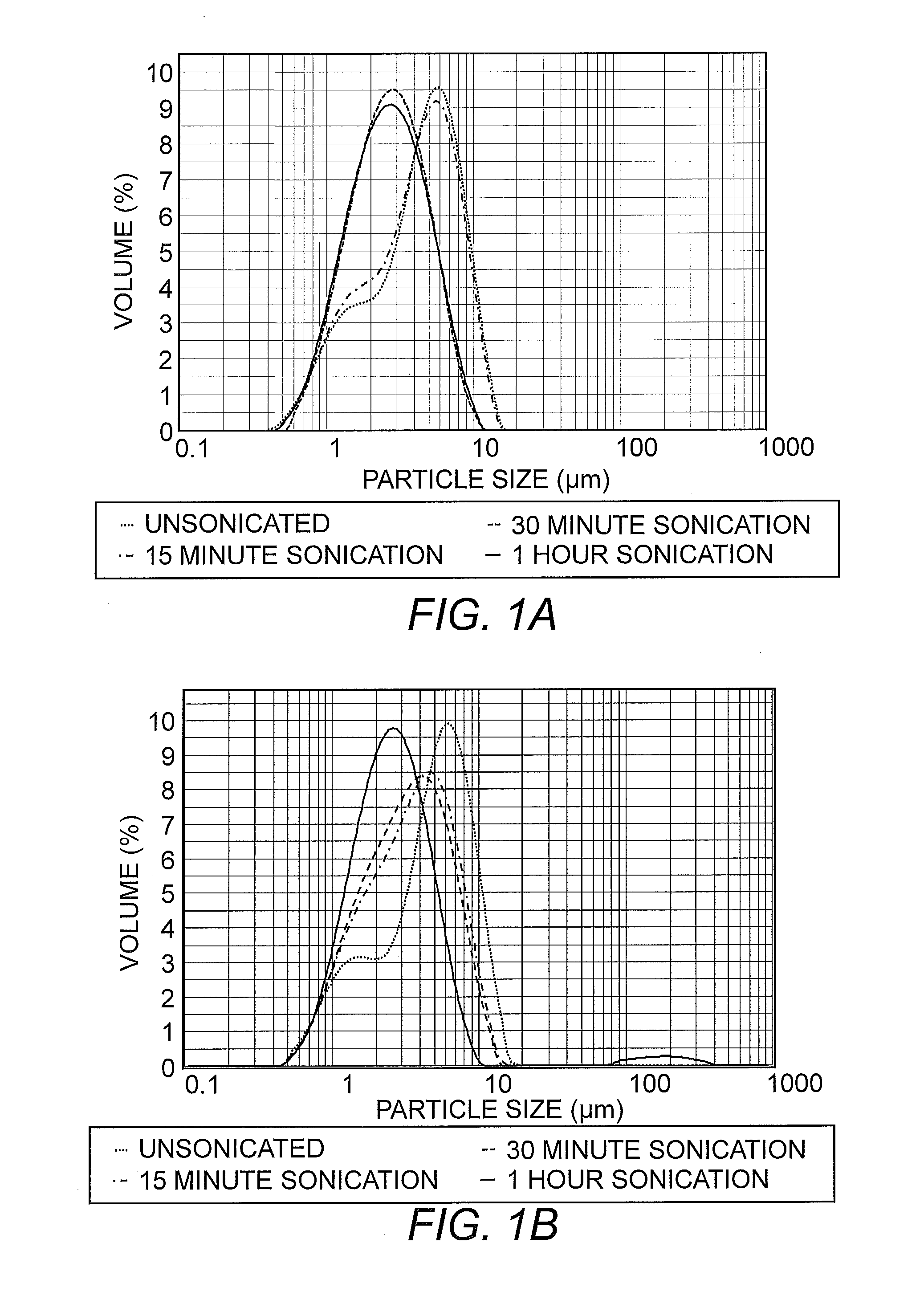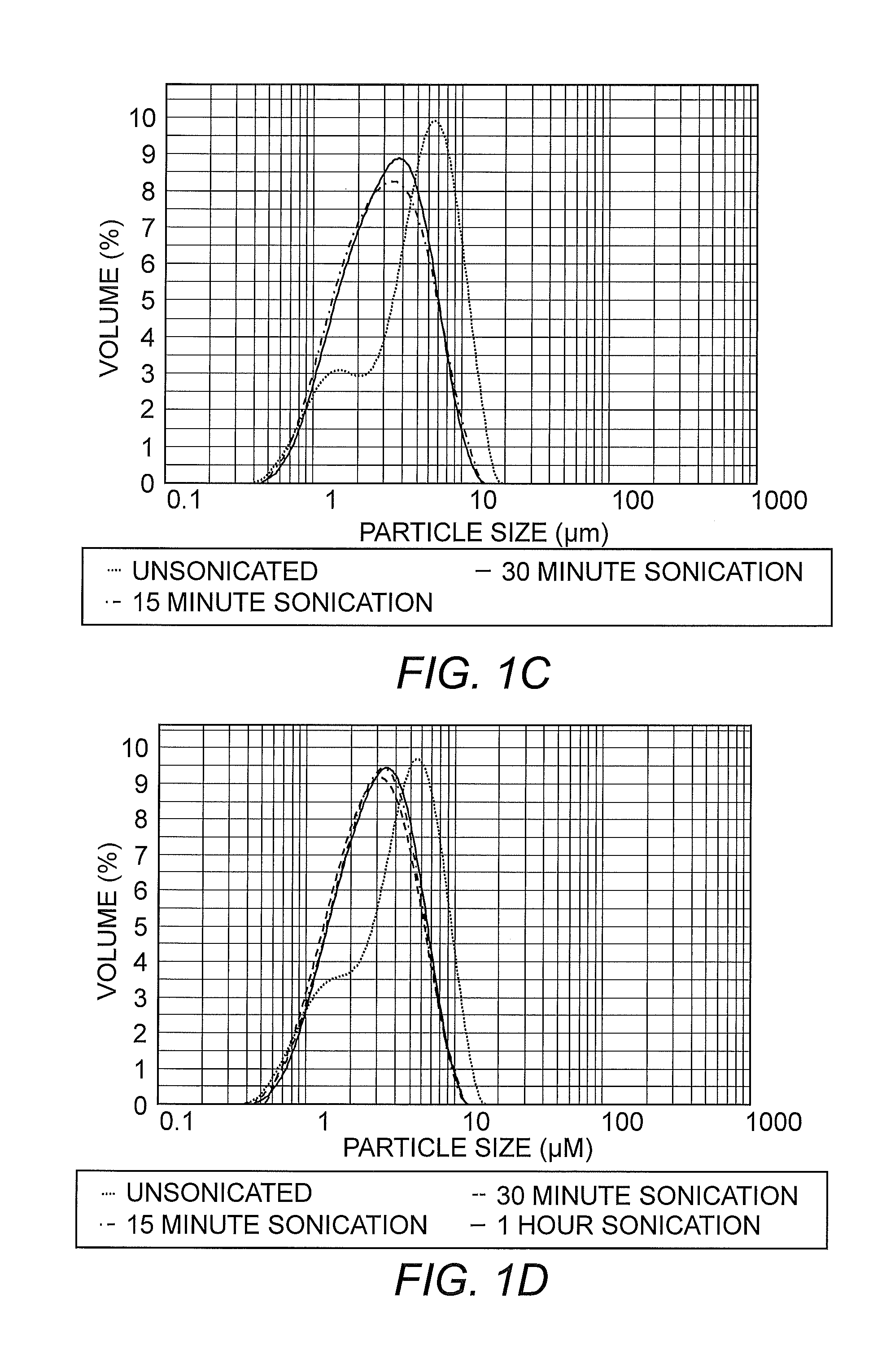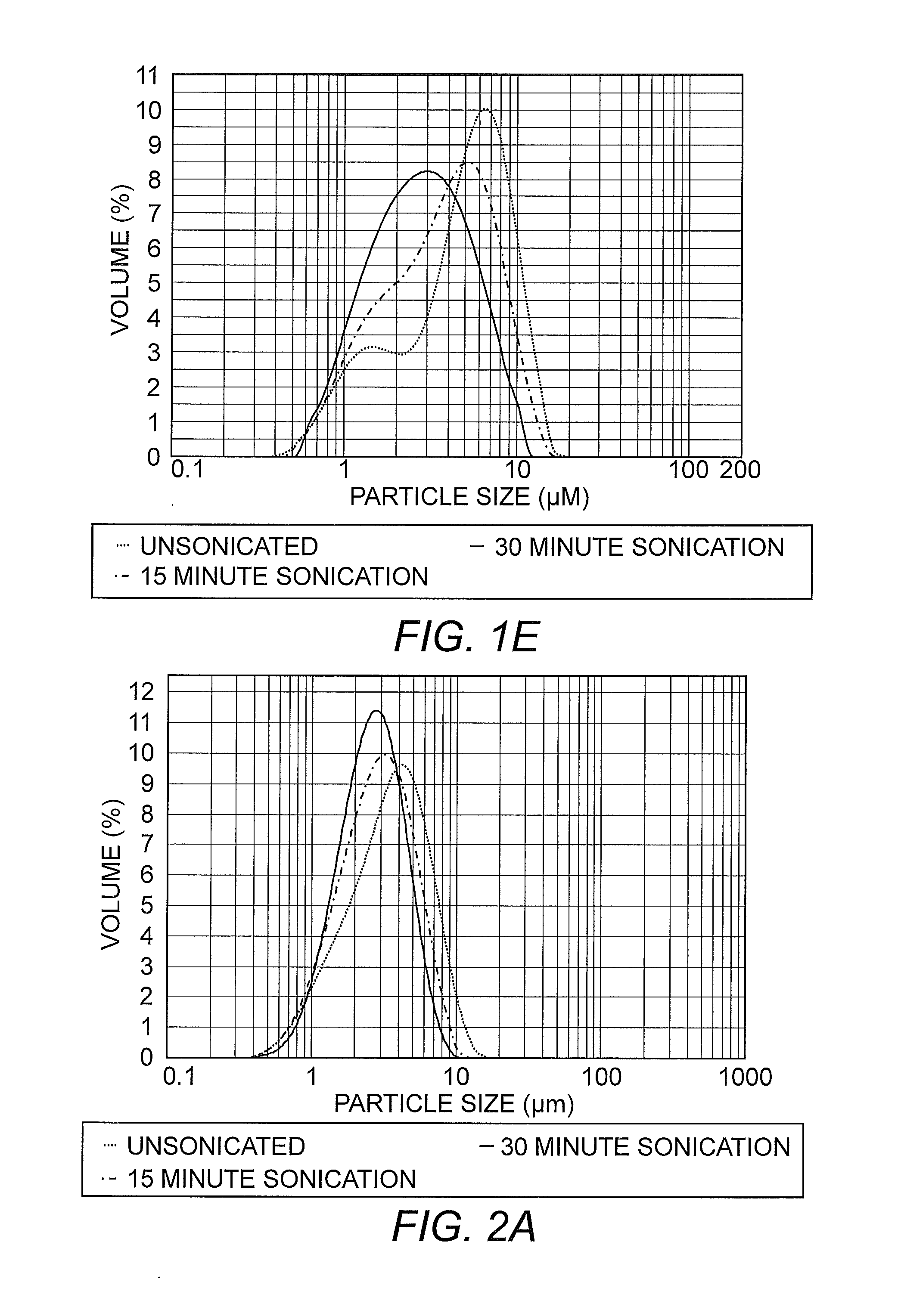Microcapsules produced from blended sol-gel precursors and method for producing the same
a technology of sol-gel precursors and microcapsules, which is applied in the direction of detergent compounding agents, hair cosmetics, disinfection, etc., can solve the problems of not being able to teach compositions and methods for releasing and hence delivering active ingredients, and not being able to significantly improve fragrance performance in consumer products
- Summary
- Abstract
- Description
- Claims
- Application Information
AI Technical Summary
Problems solved by technology
Method used
Image
Examples
example 1
Preparation of Silica Capsules with a Single Sol-Gel Precursor
[0086]This example illustrates the preparation of silica capsules using a precursor where the central silicon atom is coordinated to four alkoxy groups. The empirical formula, is Si(OR)4, where —OR is an alkoxy group and is hydrolyzable upon dispersion in water. In general, the method involves preparing a concentrated fragrance emulsification, diluting the fragrance emulsion to the desired concentration, and adding TEOS.
[0087]Preparation of Concentrated Fragrance Emulsion.
[0088]Two hundred and six grams fragrance oil was weighed out and placed in round bottom vessel. In a separate vessel, a 1.0% aqueous surfactant solution (120 g) was prepared by dissolving the needed amount of 30% cetyltrimethylammonium chloride (CTAC) surfactant solution in distilled water. The oil phase was then poured into the aqueous phase and the mixture was homogenized with a high shear mixer (Ultra Turrax T 25 Basic, IKA, Werke). Four drops of def...
example 2
Preparation of Silica Capsules Using a Blend of Precursors
[0093]This example illustrates the preparation of silica capsules using a blend of precursors. The blend was prepared using a mixture of precursors whose generic formula can be represented as Si(OR)4 and (R′)nSi(OR)m, where —R′ is a non-hydrolyzable substituent and —OR is an alkoxy group that is hydrolyzable upon dispersion in water and n+m=4. In general, the method involved preparing a concentrated fragrance emulsification, diluting the fragrance emulsion to a desired concentration, and adding the TEOS.
[0094]Preparation of Concentrated Fragrance Emulsion.
[0095]Fragrance oil (234 g) was weighed out and placed in round bottom vessel. In a separate vessel, a 1.0% aqueous surfactant solution (135 g) was prepared by dissolving the needed amount of 30% CTAC surfactant solution in distilled water. The oil phase was then poured into the aqueous phase and the mixture was homogenized with a high shear mixer (Ultra Turrax T 25 Basic, I...
example 3
Preparation of Silica Capsules Using a Blend of Precursors and Curing at Elevated Temperature
[0100]This example illustrates the preparation of silica capsules using a blend of precursors, wherein the capsules are subsequently cured at high temperature. The blend was prepared using a mixture of precursors whose generic formula can be represented as Si(OR)4 and (R′)Si(OR)3, where —R′ is a non-hydrolyzable substituent and —OR is an alkoxy group that is hydrolyzable upon dispersion in water. In general, the method involved preparing a concentrated fragrance emulsification, diluting the fragrance emulsion to a desired concentration, and adding the TEOS.
[0101]Preparation of Concentrated Fragrance Emulsion.
[0102]Fragrance oil (144 g) was weighed out and placed in round bottom vessel. In a separate vessel, a 1.0% aqueous surfactant solution (96 g) was prepared by dissolving the needed amount of 30% CTAC surfactant solution in distilled water. The oil phase was then poured into the aqueous p...
PUM
 Login to View More
Login to View More Abstract
Description
Claims
Application Information
 Login to View More
Login to View More - R&D
- Intellectual Property
- Life Sciences
- Materials
- Tech Scout
- Unparalleled Data Quality
- Higher Quality Content
- 60% Fewer Hallucinations
Browse by: Latest US Patents, China's latest patents, Technical Efficacy Thesaurus, Application Domain, Technology Topic, Popular Technical Reports.
© 2025 PatSnap. All rights reserved.Legal|Privacy policy|Modern Slavery Act Transparency Statement|Sitemap|About US| Contact US: help@patsnap.com



